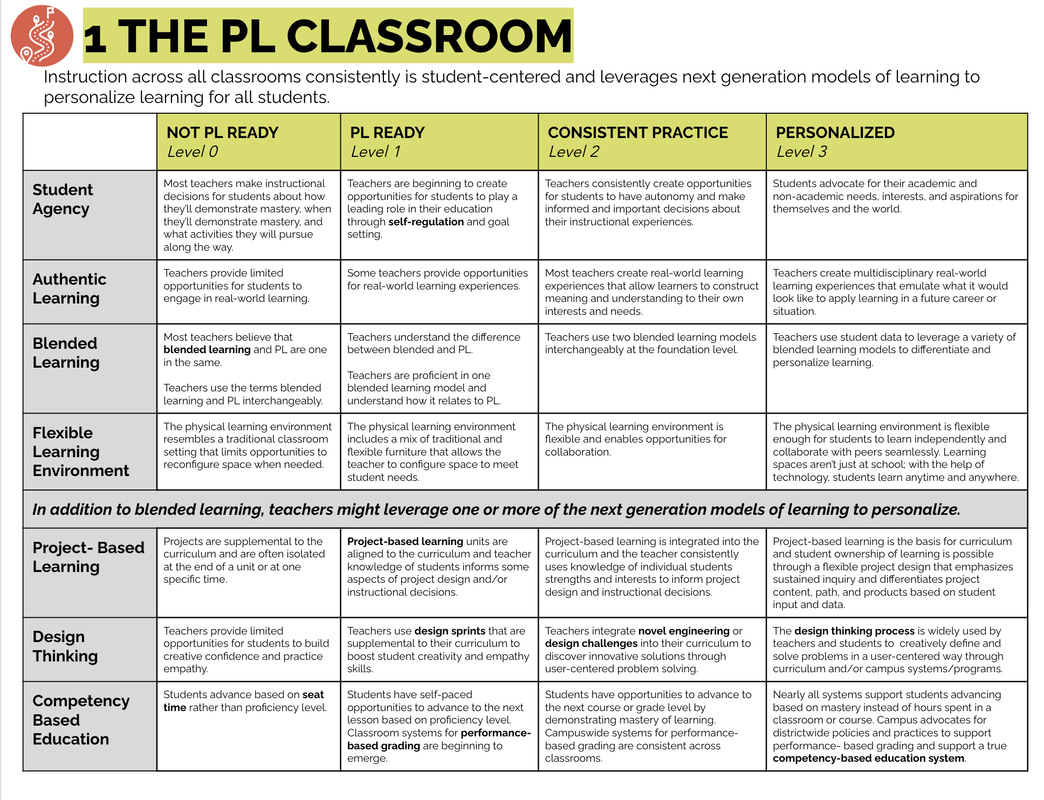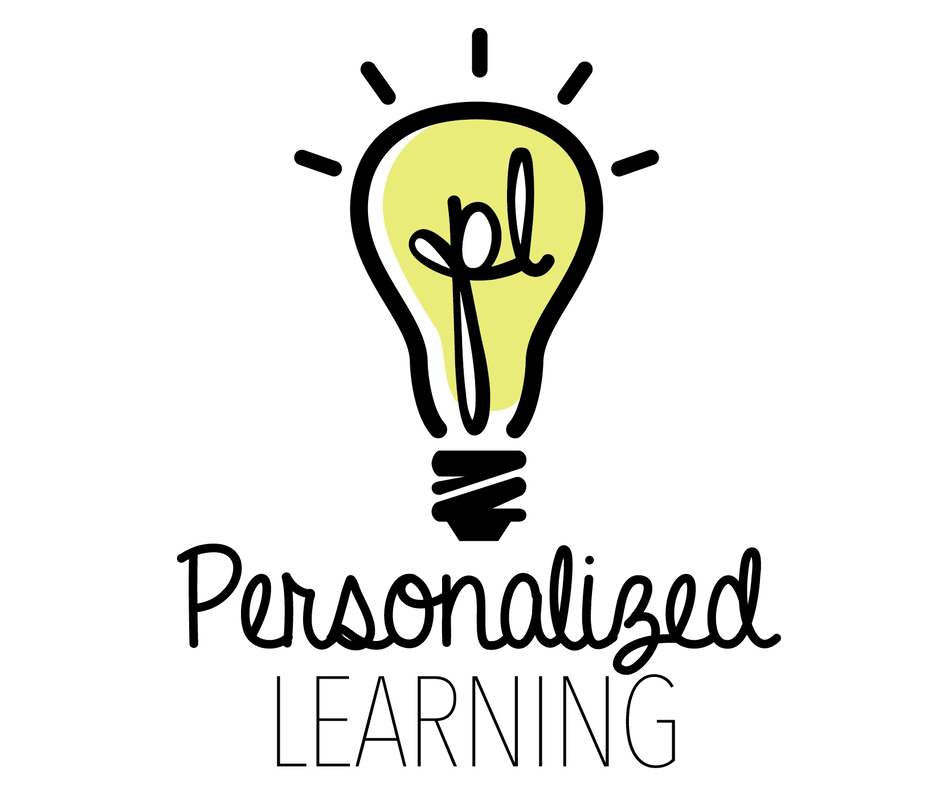Look-fors by indicator to be used during a campus visit
Note: These look-fors not meant for classroom observations or feedback.
See the BL Coaching Progressions or the PL Coaching + Development Rubric for classroom specific look-fors.
Note: These look-fors not meant for classroom observations or feedback.
See the BL Coaching Progressions or the PL Coaching + Development Rubric for classroom specific look-fors.
Not PL Ready/ PL Ready |
Consistent Practice/ Personalized |
|
Student Agency |
|
|
Authentic Learning |
|
|
Blended Learning |
|
|
Flexible Learning Environment |
|
|
In addition to blended learning, teachers might leverage one or more of the next generation models of learning to personalize.
Not PL Ready/ PL Ready |
Consistent Practice/ Personalized |
|
Project Based Learning |
|
|
Design Thinking |
|
|
Competency Based Education |
|
|


